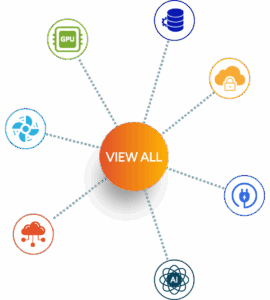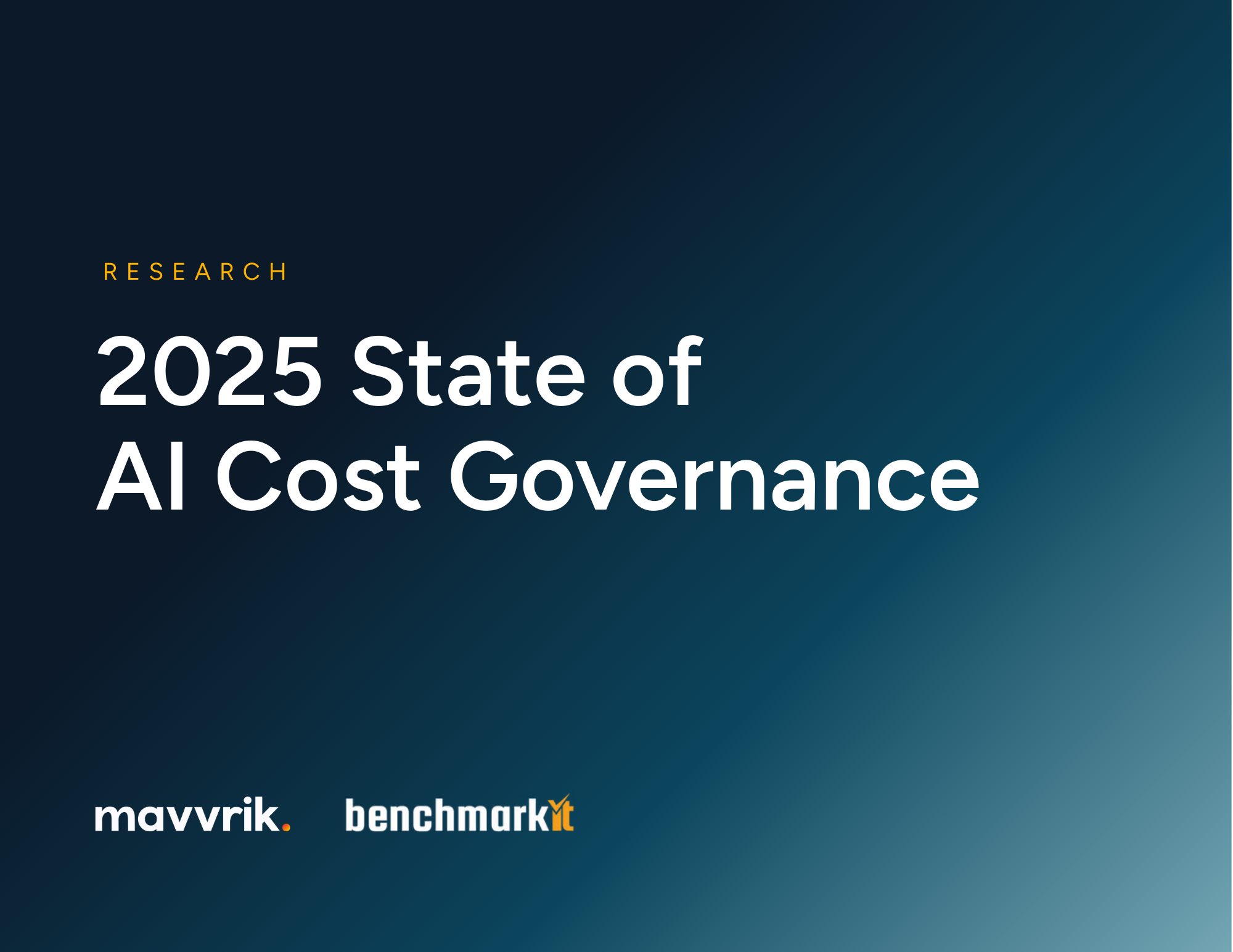By Emmy Ade, FinOps Solutions Consultant at Mavvrik
FinOps cost allocation isn’t bookkeeping. It’s the foundation of financial control. When allocation is done right, it connects architecture, operations, and business outcomes. It’s also the cornerstone of effective AI cost visibility, as GPU and inference costs rise across modern workloads. When allocation is ignored, teams chase numbers instead of insights.
What Makes Cost Allocation the Heartbeat of FinOps?
In FinOps, cost allocation has always been the quiet hero, essential yet underestimated. Most teams treat it as a spreadsheet exercise, a box to check before closing the month.
But every accurate forecast, every KPI dashboard, every optimization initiative begins with allocation. It’s the mechanism that transforms cost from chaos into clarity.
Without it, organizations chase numbers instead of insights. With it, they uncover how every decision, architectural, operational, or financial, flows into business outcomes.
That is the difference between tracking costs and mastering them.
Where Do Most Cost Allocation Models Fall Short?
Even mature FinOps teams struggle with allocation because traditional methods were never built for today’s multi-cloud, hybrid, and AI-driven environments. True allocation maturity starts when teams can connect spend to outcomes, often through cost-to-serve analysis that reveals the true unit economics behind every product or service.
Common pitfalls include:
- Dependency on perfect tagging, which never exists.
- One-dimensional mapping that ignores business complexity.
- Manual reconciliations that drain time and energy.
- Effective cost allocation starts with accessibility. YAML-based configurations are valuable for automation and scale, but the initial experience should be intuitive enough for anyone — from finance to engineering — to participate. By combining approachable design with technical flexibility, platforms make allocation a shared practice, not a technical exercise.
- The result is frustration. Finance and engineering both see allocation as a burden rather than a breakthrough.
Modern FinOps leaders know it has to change.
Why Should Cost Allocation Be Accessible to Everyone?
The biggest barrier to effective allocation isn’t technology. It’s accessibility.
Financial clarity should not require a DevOps degree. When only engineers can update allocation logic, FinOps maturity stalls. True progress happens when finance and engineering can collaborate directly.
That’s why modern allocation engines, including Mavvrik’s, enable two modes of control:
- A visual interface for finance, procurement, and business users who need drag-and-drop simplicity.
- A YAML configuration option for engineers who prefer infrastructure-as-code precision.
Think of it like a cockpit. Pilots and co-pilots have different instruments, but both steer the same plane. Allocation should work the same way.
What Are the Principles of a Modern Cost Allocation Framework?
| Principle | What It Means | Why It Matters |
| Accessibility | Finance and engineering share one model | FinOps maturity accelerates when both teams collaborate |
| Multi-Dimensional Mapping | Model cost centers, business units, products, and services | Reflects the real structure of the business |
| Cross-Environment Integration | Cloud, SaaS, on-prem, AI, Kubernetes | Eliminates silos and enables complete visibility |
| Fair/Intelligent Cost Distribution | Allocate RI/Savings Plan discounts fairly across teams/apps. | Avoids arbitrary cost allocation, keeps unit economics accurate, and preserves trust in chargeback/showback. |
| Shared-Cost Intelligence | Automate proportional or metric-based splits | Turns politics into data |
| AI & GPU-Aware Allocation | Integrate GPU, Generative AI, and Agentic workload costs into the same allocation model — tracking compute intensity, token usage, inference time, and orchestration metrics. | Brings visibility to next-generation workloads, aligns AI infrastructure spend with business outcomes, and enables precise chargeback across human and agentic activity. |
| Metric-Driven Logic | Use compute hours, tokens, or active users, number of request and other metrics not just tags for shared cost distribution and unit economics | Aligns spend to behavior and value creation |
Together, these principles turn cost allocation from a back-office function into a strategic intelligence layer.
How Do You Model a Multi-Level Organization in FinOps?
Most allocation systems flatten complexity into a single layer. But real organizations are multi-dimensional.
Business units fund products. Products depend on shared services. Services run on multi-cloud infrastructure.
A single-layer cost report cannot show how those relationships affect profitability. Multi-level allocation can.
Mavvrik’s multi-segment engine was built to mirror that structure, allowing teams to start broad, such as by cost center, and drill down to the most granular level, such as specific services.
Each layer rolls up seamlessly into the next. Finance can zoom out, engineering can zoom in, and both see the same truth.
Can One Platform Really Allocate Everything?
Modern FinOps can no longer operate in silos. Cloud, SaaS, Kubernetes, on-prem, and AI workloads all generate costs that need to be understood together. As Google Cloud’s FinOps guide notes, multi-cloud visibility is now table stakes for financial governance.
That’s why the most effective allocation frameworks unify it all:
- Multi-Cloud: AWS, Azure, and GCP costs normalized under one schema.
- Kubernetes: Namespace-level or pod-level granularity that ties to products and teams.
- AI: GPU time , token usage, and RAG retrieval costs mapped to outcomes.
- SaaS and Data platforms : Subscription and warehouse, cluster level attribution.
- On-Prem: Data center and hybrid workloads integrated into the same model.
When the CFO asks, “What’s the total cost of Product Alpha?” There should be one clear answer, not five spreadsheets.
How Should Shared Costs Be Allocated?
Shared costs are the dark matter of FinOps. They exist everywhere but are hard to attribute .
Traditional tools often ignore them or require manual guesswork. Modern allocation treats them as first-class data, especially in hybrid cost management where infrastructure and services often span both on-prem and cloud environments.
You can distribute shared costs three ways:
- Equally, for simplicity.
- Proportionally, based on usage or spend.
- Custom, using API-driven metrics such as storage usage, active users, or GPU minutes.
Once shared costs become measurable, they stop being controversial. They become transparent, defensible, and automated.
Why Move Beyond Tags to Metric-Driven Allocation?
Tags describe what a resource is, but many resources are untagged or shared across apps/teams. Usage metrics enable accurate, authoritative attribution when tags are missing or insufficient.
This approach removes the dependency on perfect tags and makes every dollar follow activity, not assumption.
That is what turns cost allocation into business insight.
Why This Changes the FinOps Game
For years, cost allocation has been treated as a chore, a way to explain overspend after the fact. Analysts at Gartner have noted the same trend, emphasizing that true FinOps maturity depends on turning allocation from reactive reporting into proactive control.
But when allocation becomes easy, complete, and intelligent, it transforms into a feedback loop that drives decision-making in real time. That’s the foundation of the Mavvrik platform, unifying financial visibility across every environment, team, and cost type.
- Finance gains trust. Numbers reconcile to the cent.
- Engineering gains visibility. Design choices reveal their true cost.
- Leadership gains foresight. Budgets and investments can be modeled and steered toward measurable outcomes.
This isn’t reporting. It’s transformation.
What Does the Future of Allocation Intelligence Look Like?
Tomorrow’s FinOps leaders won’t ask, “How much did we spend?” They’ll ask, “Why did we spend it, and what did it create?”
The future of allocation will be:
- Dynamic, updating continuously rather than monthly.
- AI-Assisted, learning from usage patterns to improve accuracy.
- Embedded, living where the work happens rather than following it later.
Allocation will no longer be a static report. It will be a real-time system of accountability.
Virtual Tagging Layer
In an ideal world, tags would be perfect — consistent, complete, and always up to date.
In reality, tags are often inconsistent, misspelled, or missing entirely. Multiple engineers naming resources differently, inherited conventions from acquisitions, or simple human error can turn what should be a clean taxonomy into a puzzle.
A Virtual Tagging Layer solves this by introducing intelligence between raw cloud data and allocation logic.
It allows teams to define standardized virtual tags when native tags are missing, and to apply rule-based correctionswhen tags exist but are dirty — for example, normalizing “FinOps,” “finops,” and “FinOpsTeam” into a single, reliable value.
With this layer in place, allocation models no longer depend solely on hyperscaler tagging discipline.
Instead, they can reference cleaned, consistent, and complete metadata that accurately represents how resources map to business units, environments, or products.
The result is trustworthy allocation without manual cleanup — even in environments where tagging maturity is uneven.
It brings order where there was entropy and ensures that financial intelligence keeps pace with operational reality.
Why it Matters
In FinOps, allocation is not about slicing the pie. It’s about proving why the pie exists.
When allocation becomes accessible, transparent, and meaningful, it connects cost, cause, and consequence.
Mavvrik didn’t just make cost allocation easier. It made it matter.
FAQ: Cost Allocation for FinOps Teams
Q1: Why can’t teams rely solely on tags for cost allocation?
Tags describe what a resource is, but many resources are untagged or shared across apps/teams. Usage metrics enable accurate, authoritative attribution when tags are missing or insufficient.
Q2: What’s the benefit of multi-level allocation?
It mirrors your organization’s structure. Costs roll up from services to products to business units, creating a full picture of performance and accountability.
Q3: How do shared costs fit into cost allocation?
Shared costs are unavoidable, but they don’t have to be messy. With proportional or metric-driven methods, they become transparent and fair.
Q4: How does AI adoption change cost allocation?
AI workloads introduce new cost types—GPU time , token usage, RAG retrieval costs —that require more granular, metric-based tracking.
Q5: What’s next for cost allocation in FinOps?
Dynamic, AI-assisted allocation models that continuously refine accuracy and embed financial intelligence directly into the systems where work happens.
About the Author
Emmy Ade is a FinOps Solution Consultant who helps organizations gain clarity and financial control over their cloud environments. His background spans cloud engineering, business analysis, and multi-cloud operations, giving him a rare blend of technical depth and financial insight. Emmy specializes in cost allocation, forecasting, optimization, and building the governance models that engineering and finance teams rely on to make confident, data-driven decisions.
A FinOps Certified Engineer and FinOps Certified Practitioner, Emmy has partnered with teams across AWS, Azure, and GCP environments to design scalable allocation frameworks, lead optimization initiatives, and embed FinOps principles into day-to-day operations. His focus is simple: helping organizations maximize the value of every cloud dollar while supporting innovation and long-term growth.


